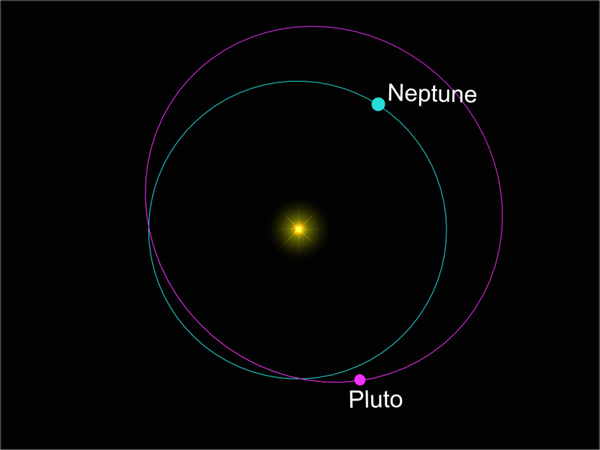
Pluto was at perihelion just a few years ago in 1989 (and recall that since Pluto takes 248 years to orbit the Sun, this is the first perihelion since it was discovered in 1930). From JPL, http://www.jpl.nasa.gov/releases/99/pluto990209.html
Key points: How Pluto was discovered; why it was demoted from planet status
Mercury, Venus, Earth, Mars, Jupiter, and Saturn have all been known since ancient times
Uranus was discovered by chance by Herschel in 1781
Neptune was discovered in 1846, ostensibly as a result of calculations to explain deviations in the position of Uranus, but substantial luck was involved.
These objects complete the list of "real" planets.
Pluto was discovered basically by chance by the self-taught astronomer Clyde Tombaugh in 1930. For historical reasons, Pluto is often called a planet; however, it has recently been re-classified as the first discovered of a large number of bodies orbiting generally outside the planetary zone, in a region we call the "Kuiper Belt." Pluto's properties are very different from the terrestrial and giant planets, and appear to be representative of other Kuiper Belt objects.
 |
Normally Pluto is more distant from
the Sun than even Neptune, but its orbit is so eccentric that sometimes it gets
closer to the Sun than Neptune. We know little about it because no space mission has
visited Pluto was at perihelion just a few years ago in 1989 (and recall that since Pluto takes 248 years to orbit the Sun, this is the first perihelion since it was discovered in 1930). From JPL, http://www.jpl.nasa.gov/releases/99/pluto990209.html |
| In fact, Pluto's orbit is peculiar in other ways - it is quite inclined compared with the rest of the system, which otherwise has orbits all lying nearly in the same plane (from Swinburne Center for Astrophysics and Computing, http://astronomy.swin.edu.au/features/gallery/animation/). |  |
Because of its great distance from the Sun (39 AU*, or 39 times the distance of the earth; sunlight takes 8 hours to reach Pluto), Pluto's surface is very cold, 35-45 degrees K, so most compounds are frozen solid. Pluto has a density of 2.0 grams/cm3, implying that it must not be just ice but must also have a significant rocky component. Pluto has a moon, Charon, which is about half as big as Pluto is (plus two more tiny moons). Both bodies are shown in the HST image below left. Charon is covered with water ice, similar to the icy moons of Saturn, Uranus, and Neptune. Two more much smaller moons were recently discovered with HST. As shown below right, Pluto is tiny compared with the earth and even with Earth's moon; the combined Pluto-Charon mass is only 1/6 that of Earth's moon;
* Remember that the radius of the Earth's orbit is an "astronomical unit," abbreviated as "AU."
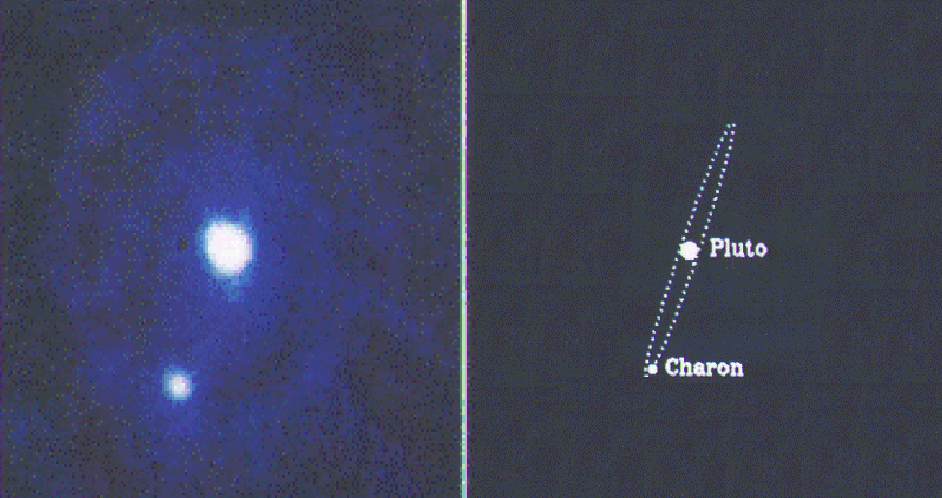 |
 |
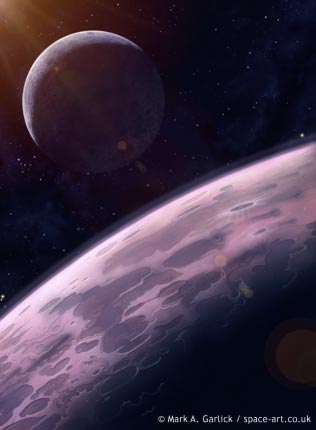 |
Our pictures show very little detail for Pluto and Charon; maybe the
pair looks like this artist's concept:(From M. A. Garlick http://www.space-art.co.uk/index.html)
|
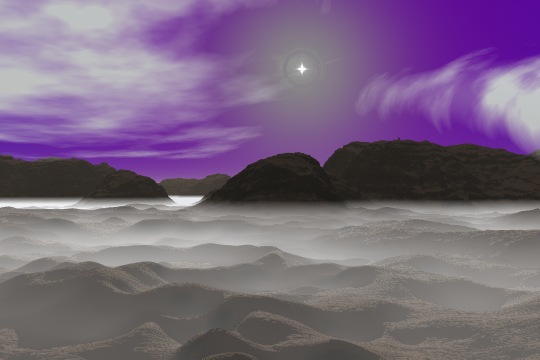 |
Pluto has a thin atmosphere that probably exists only while it is near perihelion (closest to the sun). The atmosphere is probably methane that melts when Pluto is warmest near perihelion and freezes onto the surface when Pluto is more distant from the Sun. It might look like this artist's concept when the atmosphere is near its peak. from Germantown Elementary School http://www.germantown.k12.il.us/html/Pluto.html |
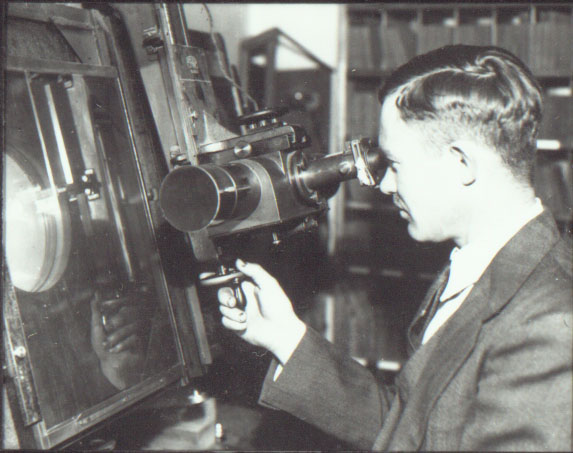 |
He analyzed repeat photographs of the sky using a
"blink comparator" to compare pairs of photos and look for moving objects. http://www.planetary.org/pluto_75/plutodiscovery1_180205.html
|
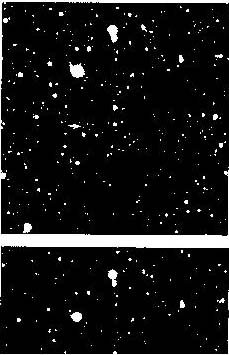 |
 |
| Can you find Pluto in the pictures above (they are the original
discovery pictures)? Look here |
How a blink comparator helps. (from Gil Clark, Apple Valley students, http://www.jpl.nasa.gov/ice_fire/vol1a.htm, adapted by G. Rieke) |
Tombaugh spent about 7000 hours (3.5 working years) at the blink comparator before he found Pluto. And he found it after he had searched only a small part of the sky -- it was just luck that it was there, since the predictions he used to guide his search turned out to be bogus!
To learn more, try http://www.klx.com/clyde/pluto.html
 Huygen's drawing explaining the various aspects
of the rings of Saturn. http://www.surveyor.in-berlin.de/himmel/Bios/Huygens-e.html Huygen's drawing explaining the various aspects
of the rings of Saturn. http://www.surveyor.in-berlin.de/himmel/Bios/Huygens-e.html |
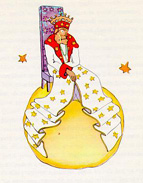
Asteroid with its king, from The Little Prince, http://www.poetryfountain.com/littleprince.html. |
|
Click to return to syllabus |
||
| Click to return to Outer Solar System Moons and Rings | hypertext |
Click to go to Solar System Debris |